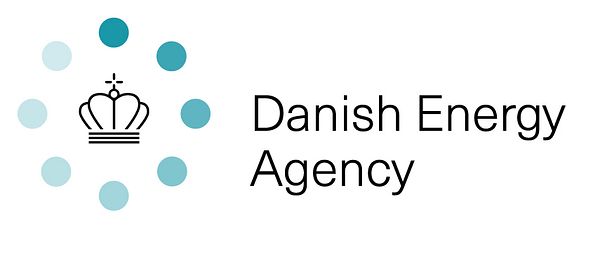Press release -
Energy consumption increased in 2016 due to less wind
Colder weather in 2016, combined with lower wind power production and lower net imports of electricity meant that Denmark’s energy consumption and carbon emissions rose last year. This is confirmed by the Danish Energy Agency’s preliminary energy statistics for 2016.
Observed energy consumption in Denmark increased by 4.0% to 749 PJ in 2016. The rise is primarily due to a 9.6% drop in production of wind power last year, while net imports of electricity also fell by 14.5%. Furthermore, 2016 was colder than 2015. With adjustments for fuel consumption linked to foreign trade in electricity and climate fluctuations, energy consumption rose by 2.5% in 2016.
The falling net imports of electricity and the falling production of wind power meant that a larger percentage of electricity consumption was covered by domestic power plants in 2016. In addition, consumption of coal by power plants rose by 14.7% compared with 2015, while consumption of oil, natural gas and renewables etc. increased by 3.1%, 1.0% and 4.7%, respectively.

Increase in emissions of CO2
The increased consumption of fossil fuels in 2016 meant that observed emissions of CO2 from energy consumption rose by 5.6% compared with 2015. Adjusted for fuel consumption linked to foreign trade in electricity and climate fluctuations, carbon emissions rose by 2.9% in 2016.
Based on the preliminary energy statistics, the total observed emissions of greenhouse gases are estimated to have increased by 4.1% in 2016, and emissions adjusted for climate and fuel consumption linked to foreign trade in electricity are also estimated to have increased by 2.2%.
A final statement of Denmark’s emissions of greenhouse gases will be published later by DCE - Danish Centre for Environment and Energy.
Increase in the use of renewables
Renewable energy’s share of energy consumption rose in 2016. Simultaneously, the percentage of renewable energy in adjusted gross energy consumption also increased from 28.3% in 2015 to 28.8% in 2016.
The EU calculates the percentage of renewable energy differently, taking final energy consumption as the point of departure. It will not be possible to calculate this percentage until the final energy statistics have been published by the Danish Energy Agency in the autumn. In recent years, the renewable energy share, according to the EU calculation method has been around 1-2 percentage points higher than in the national statement based on adjusted gross energy consumption.
Degree of self-sufficiency still falling
The degree of self-sufficiency for energy fell in 2016 from 89% to 83%. This resulted in a total production of energy from oil, natural gas and renewables in Denmark corresponding to 83% of Denmark's adjusted gross energy consumption in 2016.
Degree of self-sufficiency is a measure of the ratio between primary energy production and consumption of oil, natural gas, coal, renewables and waste in Denmark. Regarding the ratio between consumption and production of oil and gas, Denmark continues to be a net exporter; with a degree of self-sufficiency of 112% in 2016.
The total energy production in Denmark fell by 4.7% to 643 PJ in 2016. The production of crude oil and natural gas fell by 10.0% and 2.5%, respectively, while production of renewable energy rose by 3.4% in 2016 compared to 2015.
Rise in energy intensity
Energy intensity measured in relation to adjusted gross energy consumption increased by 1.4% in 2016 compared with 2015. The increase reflects an increase in gross energy consumption as a result of the conditions for wind power in 2016. An increase in intensity means that the energy consumption has risen even more than the gross domestic product.
During the period from 2000 to 2016, intensity fell by 20.1%. It is currently not possible to calculate energy intensity for individual sectors. However, these figures will be included in the final energy statistics, which are to be published by the Danish Energy Agency this autumn.
Energy intensity is a measurement of adjusted gross energy consumption in relation to gross domestic product.
Updated energy indicators in Energy Statistics 2015
The Danish Energy Agency has recalculated energy indicators for the period 1990 to 2015 based on the revision by Statistics Denmark of figures in the national accounts in November 2016 and Energy Statistics 2015.
See the memo on the recalculated indicators to replace the indicators in Energy Statistics 2015.
Table of facts
Contact:
Special advisor Jane Rusbjerg, tel: 33 92 68 36, email:jru@ens.dk
Head of Media Relations Ture Falbe-Hansen, tel: 25 13 78 46, email:tfh@ens.dk
Topics
- Energy issues
The work of the Danish Energy Agency involves matters relating to energy supply and consumption, as well as Danish efforts to reduce carbon emissions. The Agency is also responsible for Danish building policy and promotes more sustainable building with regard to energy consumption, use of materials and economic issues.
The Agency is responsible for the entire chain of tasks linked to energy production and supply, transportation and consumption, including energy efficiency and savings as well as Danish national CO2 targets and initiatives to limit emissions of greenhouse gasses. The Agency supports building-policy initiatives to increase the productivity and quality of building as well as the operation and maintenance of buildings, with focus on sustainable building. The Agency also collaborates with the building sector to establish a good framework for the industry.
The Danish Energy Agency was established in 1976, and is an agency under the Ministry of Climate, Energy and Building. The Agency employs about 360 persons.
